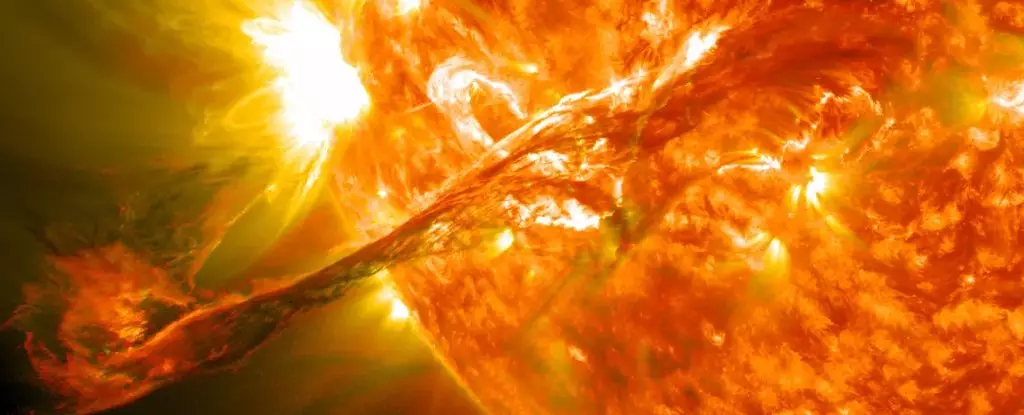The Sun, from a distance, appears to be a serene and idyllic presence in our everyday skies. However, upon closer inspection, it reveals itself to be a tumultuous and chaotic display of solar activity that has astrophysicists scratching their heads. Contrary to expectations, the Sun has been far more active during this current solar cycle than anticipated. Andrew Gerrard, the department chair and director of the Center for Solar-Terrestrial Research at New Jersey Institute of Technology, revealed to Business Insider that the observations have caught experts off guard. Solar cycles typically span around 11 years, during which the Sun transitions from minimal to maximal solar activity. The peak of this activity occurs in the middle of the cycle when the Sun’s magnetic fields undergo a flip. The previous solar cycle lasted from 2008 to 2019, and we are currently in the midst of the ongoing cycle, approaching maximum magnetic activity.
In recent years, solar magnetic activity has been escalating, creating cooler pockets on the solar surface that manifest as dark spots known as sunspots. These sunspots play a crucial role in indicating solar activity levels, with record-high numbers being observed over the past year. The National Oceanic and Atmospheric Administration (NOAA) reported a significant increase in sunspots, setting a new daily record of 299 spots that appeared within 24 hours, the highest in over two decades. Tracking sunspots is essential as they serve as the primary source of potent solar flares and massive eruptions, such as coronal mass ejections, which have the potential to impact Earth in various ways.
X-class solar flares and coronal mass ejections, while visually stunning, pose significant threats to our planet. Upon eruption, they release high-energy particles into space at incredible speeds, some of which may interact with Earth’s magnetic field and upper atmosphere, initiating geomagnetic storms. These storms can result in captivating displays of auroras but also disrupt critical systems such as high-frequency radio emissions and satellite communications. Geomagnetic storms have been causing radio blackouts across multiple continents, leading to temporary GPS malfunctions, power outages, and disruptions in aviation operations.
Spacecraft are particularly vulnerable to the effects of solar activity, as elevated geomagnetic conditions can increase atmospheric drag and pose risks to satellite systems. Instances of spacecraft experiencing difficulties due to geomagnetic storms have been reported, with satellites falling from orbit or encountering service degradation. The unpredictable nature of solar activity and its impacts on satellite technology highlight the importance of ongoing research in predicting solar storms and mitigating their potential consequences.
Scientists predict that solar maximum, the peak of solar activity levels, will occur in the latter half of 2025. While the current solar cycle’s maximum is projected to be stronger than initially anticipated, experts view it as relatively average in a historical context. However, the increasing reliance on satellite technology means that we are more susceptible to the effects of solar maximum now than ever before. As the Sun continues to ramp up its activity, researchers emphasize the need for preparedness and vigilance in monitoring and responding to solar events that may impact Earth and its technological infrastructure.

